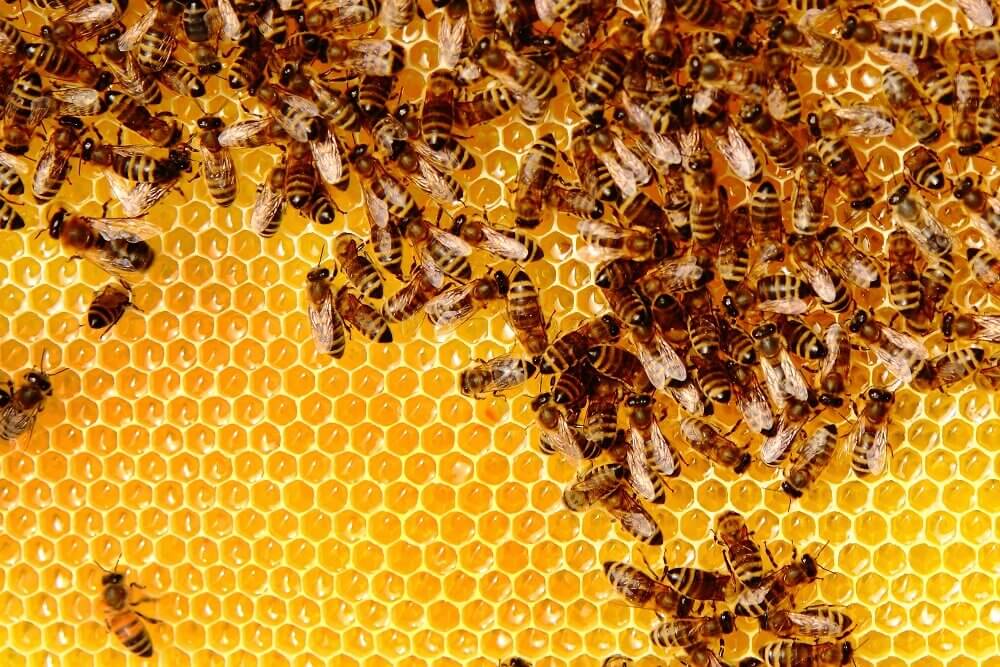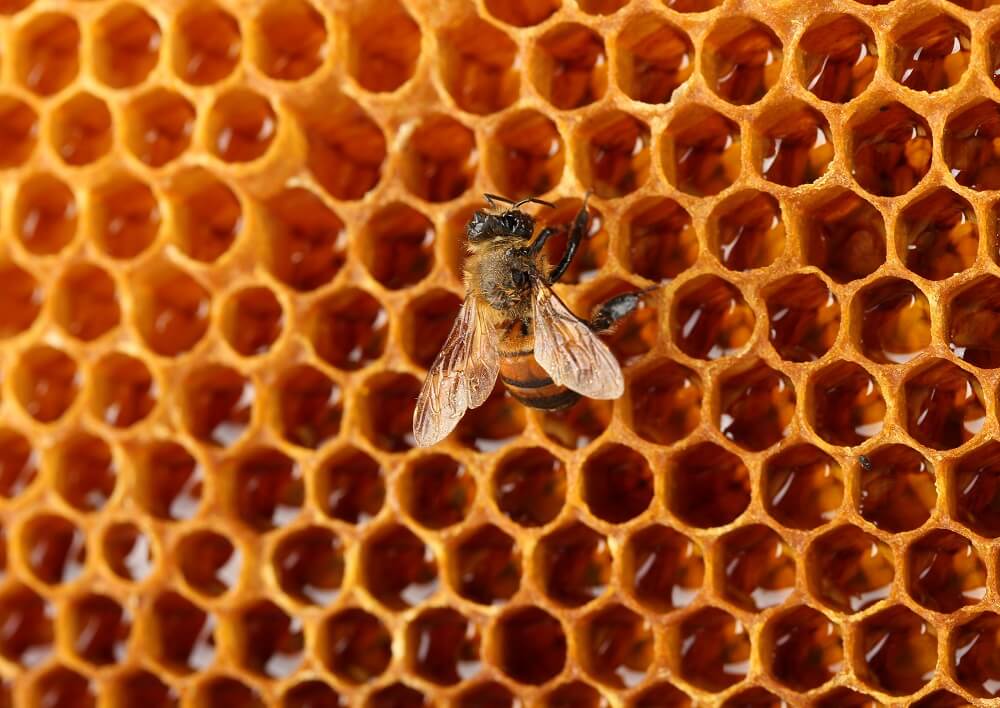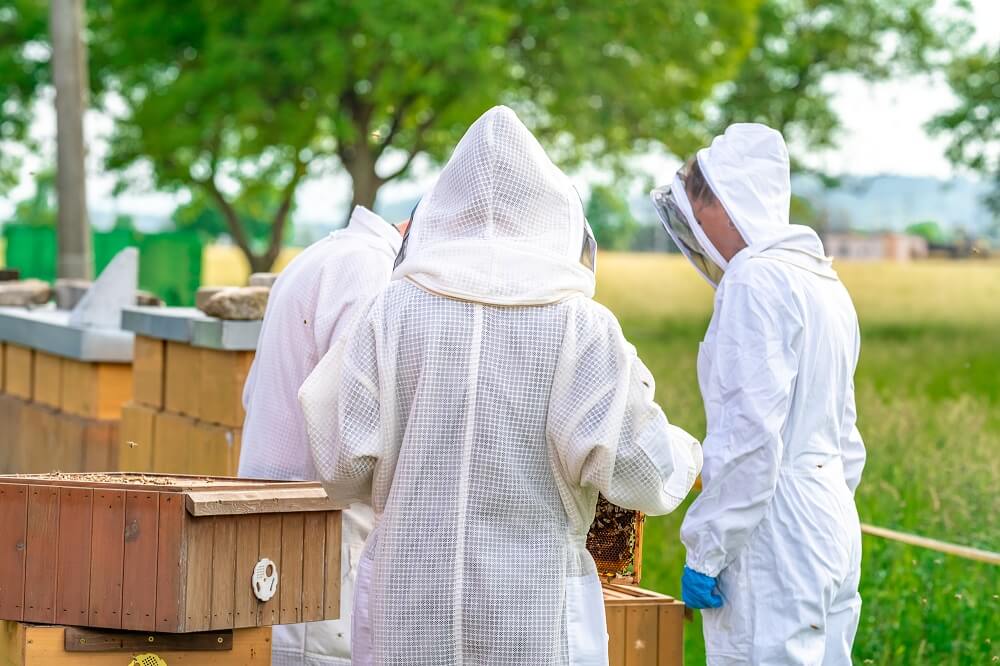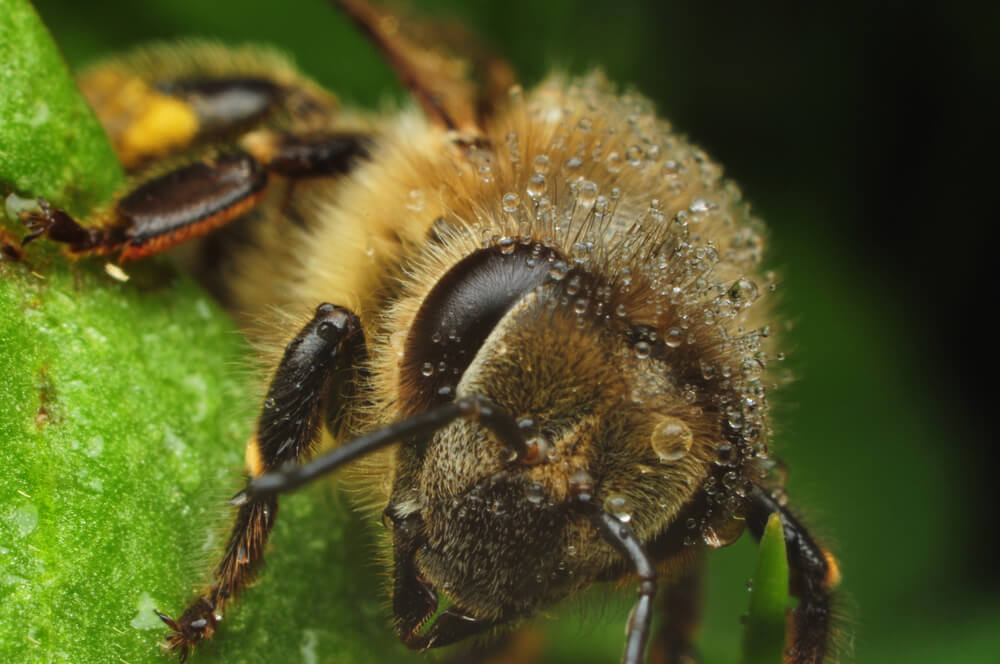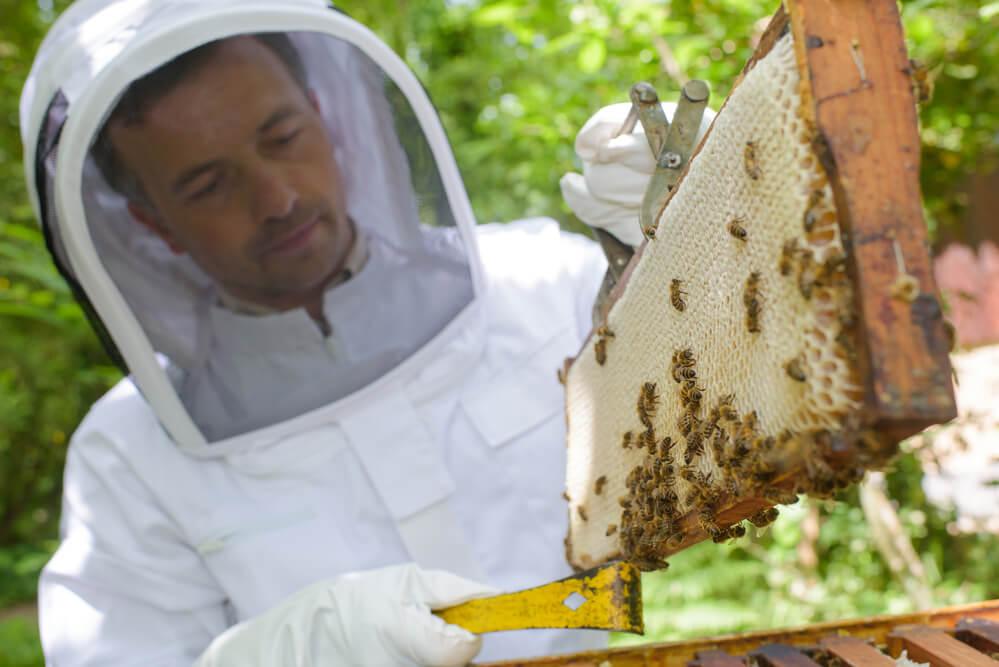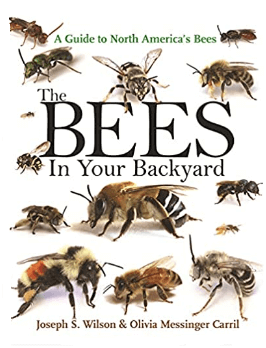How Many Bees Are in a Hive?
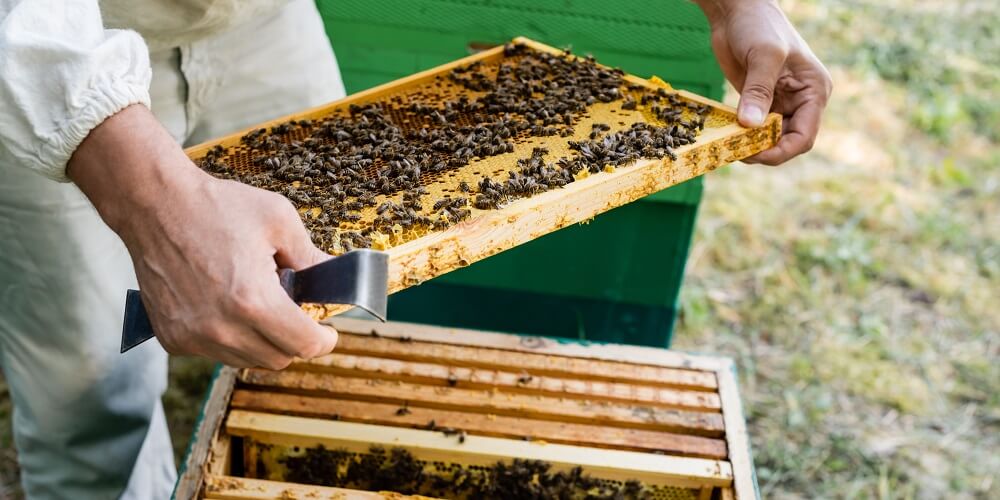
Short answer:
Most honeybee colonies have between 10,000 to 60,000 bees.
Long answer:
Now I know what you’re thinking:
10,000 to 60,000 bees in a hive? That’s a huge range.
You’re right. But consider this:
Many factors go into the size of a honeybee colony. For example, weather, food resources, hive health, and pests all contribute to the number of bees in a hive. That’s why this question isn’t easy to answer with exact numbers.
We have to estimate.
And to estimate correctly, we have to understand the roles of each colony member. So let’s talk about that next.
Related: The 3 Best Bee Suits for Beekeepers
The Roles of Honeybees
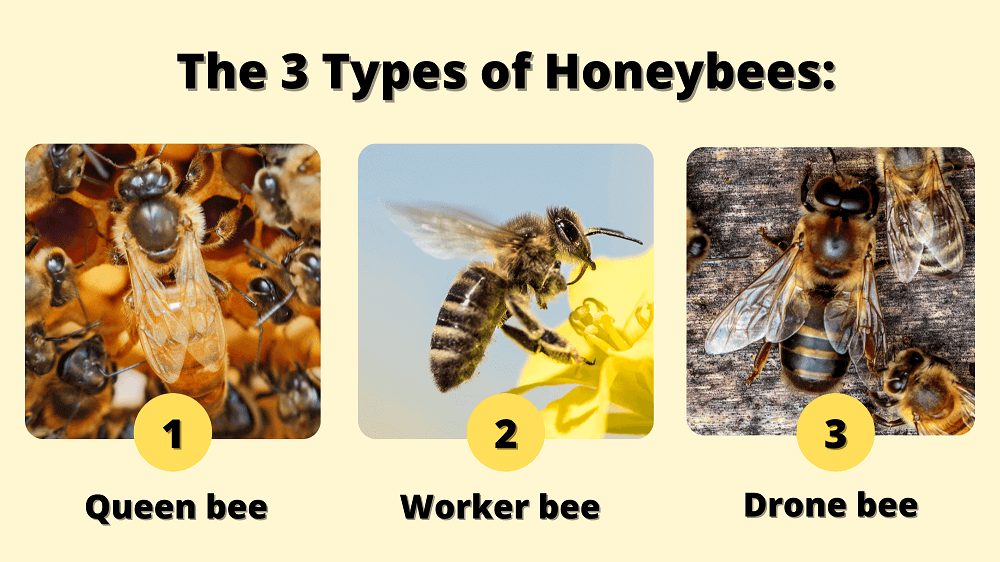
Let’s face it.
All bees aren’t created equally.
In every colony, there are three types of honeybees:
- The queen bee
- The worker bees
- The drones
Here’s the interesting part:
Each bee has a specific job. And if one bee starts “slacking” on the job, they’re removed from the hive.
Take queen bees, for example.
As a queen bee nears the end of her life, she lays fewer eggs, and her queen pheromones diminish. Once the worker bees sense this, they immediately start raising new queens to replace her.
And what happens next?
Once the new queen hatches, she and the old queen will fight to the death. The survivor is declared the winner and takes the crown.
Here’s a video of two queen bees fighting:
With me so far?
Now let’s talk more specifically about numbers.
Related: The Top 16 Best Flowers for Bees
How Many Queen Honeybees are in a Hive?
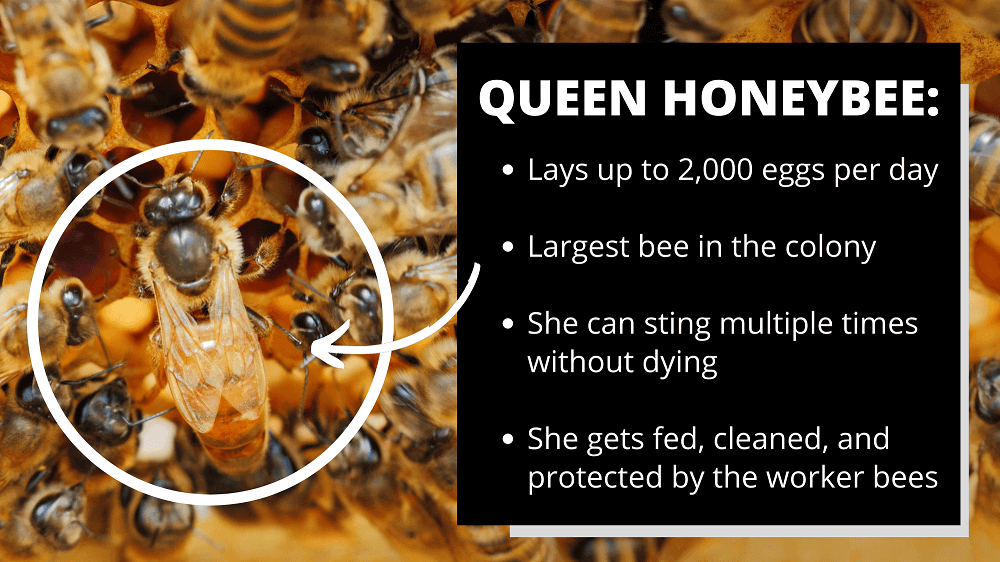
There is only one queen bee per hive.
And the royal highness has one very important role:
To lay eggs.
And for a honeybee hive to reach 60,000 bees or more, the queen must be healthy and stay busy.
Put it this way:
The future of the colony depends on the queen.
An average-sized colony can lose up to 1,000 bees per day in the summer. Most of these losses come from worker bees who work themselves to death (literally).
These worker bee losses are recouped by a busy queen who can lay up to 2,000 eggs per day.
Speaking of worker bees, let’s talk about those next.
Related: How to Make a Safe Bee Waterer
How Many Worker Honeybees are in a Hive?
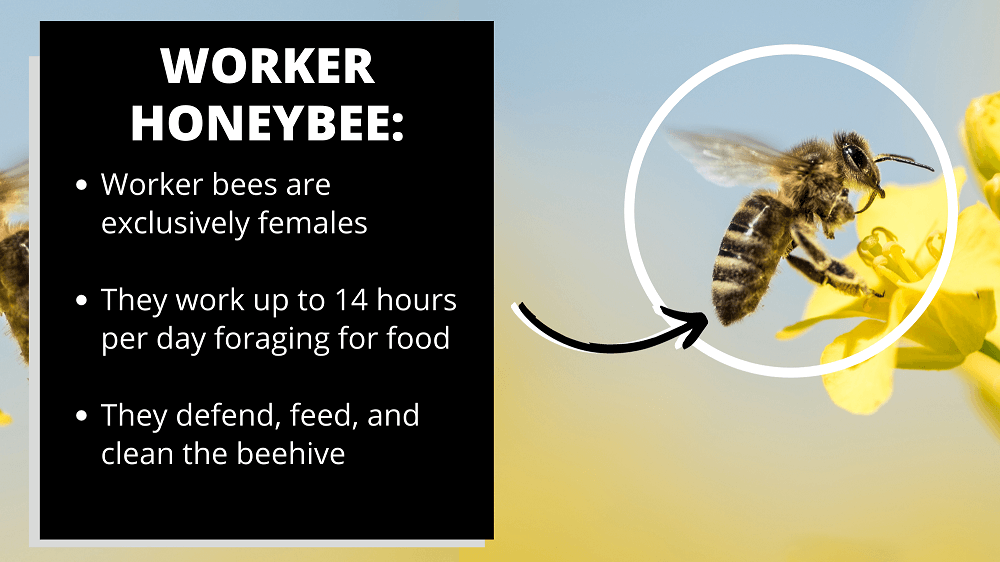
At least 95% of the hive consists of worker bees.
So in a hive with 60,000 bees, this means 57,000 of them will be worker bees.
Now keep in mind:
Worker bees do all the heavy lifting. Some of their duties include:
- Foraging for food
- Cleaning the hive
- Tending to the queen bee
- Tending to the baby bees
- Building honeycombs
- Making honey and wax
- Protecting the hive
Worker bees are all female. But unlike the queen bee, they can’t lay fertilized eggs. Instead, they focus on their other responsibilities and cater to the queen 24/7.
So both the queen and worker bees are female…what about the male bees?
Let’s talk about those next.
Related: How to Make Sugar Water for Bees
How Many Drone Honeybees are in a Hive?
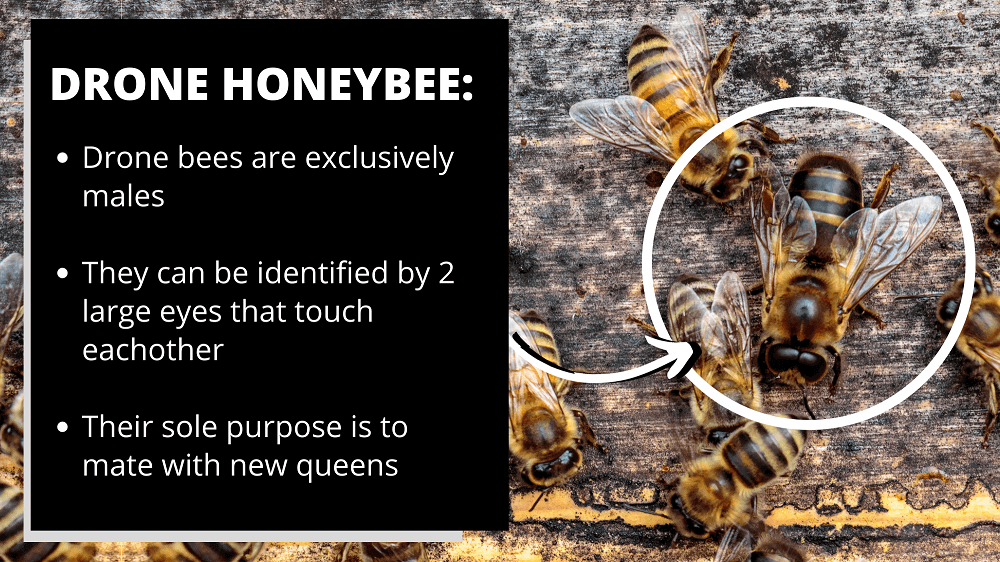
There are usually only a couple hundred drones in a hive.
But let me be clear:
The amount of drones depends on the season. You see, drones are exclusively male bees, and they have one very important job:
To mate with a virgin queen.
But get this:
Only the fastest drones get to mate with the queen.
During peak season, hundreds or even thousands of drones compete for the chance to impregnate the queen. They don’t fight. They simply fly as fast as they can to catch up to the royal highness.
On average, about 10-20 drones get to mate with a single queen. And after mating, these drones die.
So what about the rest?
For the drones that don’t mate, they hang around until fall. Once late fall arrives, the worker bees decide drones are no longer needed. That’s when they remove them from the hive.
Related: What is a Bee Smoker?
FAQs on “How Many Bees Are in a Hive?”
- How many bees are in a 10-frame hive?
- How many bees are in a hive in the winter?
- How many honey bees are in a hive?
- How many bees are in a swarm?
- What is the minimum number of bees in a hive?
- How many bees die a day in a hive?
- Do all bees live in a hive?
- How many bees in a hive are female?
- How do you calculate how many bees are in a hive?
- How many bees come in a package?
How many bees are in a 10-frame hive?
A healthy colony filling two 10-frame deeps contains between 30,000-60,000 bees.
Related: Honey Extractors 101: Everything You Need to Know
—> Go back to the FAQs on “How many bees are in a hive?”
How many bees are in a hive in the winter?
The ideal colony will go into the winter with around 35,000 – 40,000 bees. That’s the equivalent of four 3-pound packages of bees.
Related: What is Backyard Beekeeping?
—> Go back to the FAQs on “How many bees are in a hive?”
How many honey bees are in a hive?
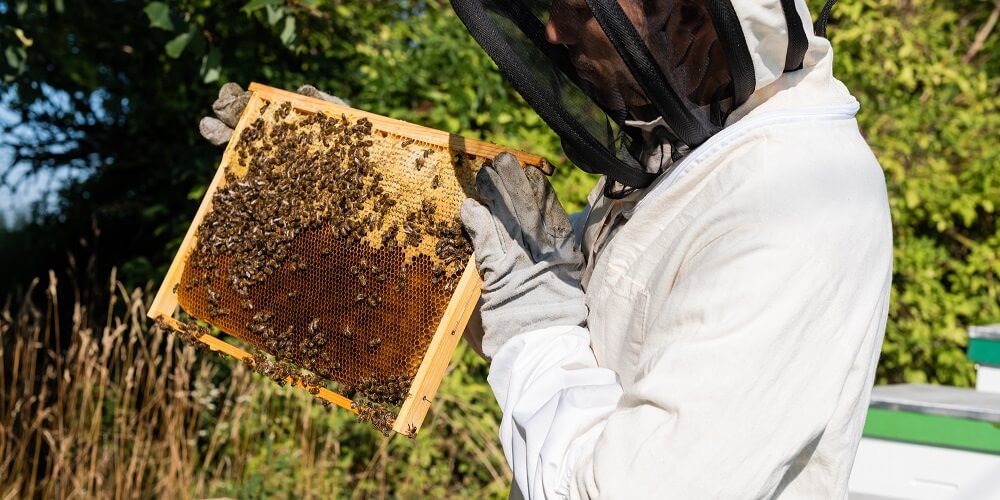
We often get asked:
How many bees are in a small hive? How many bees are in a nest? How many honeybees are in a colony?
Most honeybee colonies have between 10,000 to 60,000 bees.
Typically, a beekeeper would start a hive with a package containing around 10,000 bees. You usually don’t want to start a hive smaller than that.
Remember:
It requires a great deal of labor to keep the proper temperature, humidity, brood, and royal jelly to feed the queen so she can lay eggs. Worker bees are needed to make these things happen.
That said, there are hives with around 600 bees. These are called mini mating nucs, and they’re made to mate newly hatched queens. Mini-nucs should be viewed as “starter” colonies. Mini-nucs can’t grow large enough to actually be a hive in a season.
The smallest number of bees I would recommend is a 2-pound package with 7,000 bees. At a very minimum, you need at least one pound of bees, but three pounds is best.
The bottom line?
It’s best to start a new hive with a 3-pound package of bees. This gives you about 10,000 bees, increasing the colony’s survival chances.
Related: Flow Hive Review: Everything You Need to Know
—> Go back to the FAQs on “How many bees are in a hive?”
How many bees are in a swarm?

When bees swarm, between 40 – 60% of the old colony leaves and forms a new colony.
So what is a swarm, you ask?
Well, picture this.
A honey bee colony has survived a cold winter.
There are fewer bees in the colony now than during the summer, with just the queen and perhaps 10,000 to 20,000 workers huddled together for warmth.
There are no drones – all of the remaining ones were removed during the fall to conserve food supplies.
When the weather warms up, the colony grows and more worker bees are born.
It’s a wonderful thing to witness as a beekeeper.
Why?
Because the honey bee colony is a super-organism: a highly coordinated group of thousands of bees performing specific duties.
There may be 60,000 bees working in a number of roles: busily foraging, regulating the hive’s temperature, defending the colony, caring for the brood, feeding one another, cleaning and producing wax comb and honey.
Meanwhile, the queen is busy laying eggs.
There comes a time when the crowd is so big that not all of the workers have direct access to the queen. They’re no longer receiving her pheromone scent because there are so many bees.
This motivates the worker bees to develop a new honey bee queen.
But, there is only enough room for one queen in the colony.
So the honeybees that are ready to swarm will fill themselves up on nectar before the new queen emerges. Then, they’ll depart with their queen and try to establish a new hive.
When the swarm departs from its former hive, it forms a cloud of buzzing bees in the air.
From there, the scout bees will find a new location for their hive.
—> Go back to the FAQs on “How many bees are in a hive?”
What is the minimum number of bees in a hive?
Bee packages for starting a hive weigh 3 pounds and contain around 10,000 bees. This amount of bees gives them a better chance to get going.
I don’t recommend starting a hive with less than 10,000 bees. In other words, don’t try to get away with a 1 or 2-pound package – buy a 3-pound package instead.
—> Go back to the FAQs on “How many bees are in a hive?”
More to Explore:
How many bees die a day in a hive?
During the summer months, up to 1,000 bees can die per day in large colonies. The majority of these are worker bees who literally work themselves to death. Bees “wear out” more than they die of old age.
Their daily responsibilities take a toll on their wings and bodies. Most bees die away from the colony while they’re out foraging for food. If any bees die near the hive, other bees will tote the bodies away, so it keeps the hive clean and tidy.
And the queen bee, which can lay up to 2,000 eggs daily, soon replaces them.
—> Go back to the FAQs on “How many bees are in a hive?”
More to Explore:
Do all bees live in a hive?

No, most bees are solitary, which means they live alone. In North America, an estimated 70% of all bees nest underground, with the majority of them being solitary bees.(1)
Solitary bees live in nests made by the female. The female solitary bee plays both the role of “queen” and “worker” bee. She’s responsible for finding a nest, laying eggs, and feeding herself and her larva.
Solitary bees are also typically passive-natured.
They’ll only sting or attack if they are physically threatened, as they have no colony to protect. Since they’re so docile, it encourages gardeners to put up bee hotels to attract them to their yard.
—> Go back to the FAQs on “How many bees are in a hive?”
More to Explore:
How many bees in a hive are female?
Upwards of 90% of the bees in a hive are female.
Why?
Because worker bees, or female honey bees, make all of the colony’s decisions and do all of the labor.
Even better?
Bees have the ability to determine the gender of their offspring, which is why they produce so many more females than males.
Male bees, or drones, have one job which is to mate with virgin queens.
Now don’t get me wrong:
The drones play an important role in the survival of a honeybee colony.
But, once their job is done, they aren’t needed.
They don’t clean the hive. They don’t protect it. They don’t collect food. Because of this, worker bees don’t want drones hanging around any longer than necessary because they use up valuable resources. They consume food, for example, but they don’t contribute food.
In addition to all of the worker bees, there is one queen bee per hive. She lives an average of two to three years.
The queen bee is the mother of all bees in the hive, and she lays over one million eggs during her lifetime.
The queen never leaves the hive except to mate with drones from neighboring hives. To keep up with the hive’s high demand and compensate for the short lifespans of worker bees, the queen bee lays a lot of eggs.
—> Go back to the FAQs on “How many bees are in a hive?”
More to Explore:
How do you calculate how many bees are in a hive?
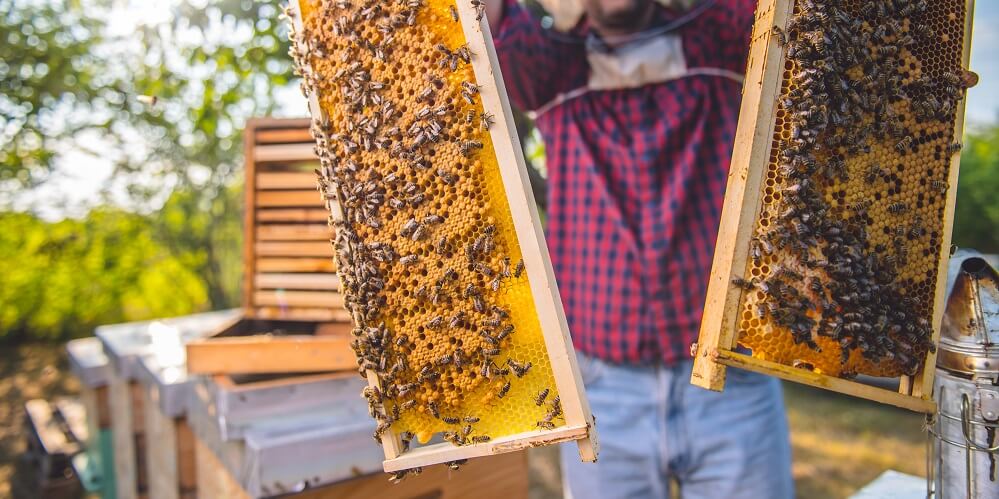
This is a tough question to answer with an exact science.
That said, I recently read where a beekeeper gave this suggestion:
“The best way to get a reasonable estimate is to have your hive on a scale and see the weight shift as a day starts. This way, you know the weight of the foraging bees, who represent roughly one-half of your total population. Divide that by the weight of a bee (120 mg), multiply by two, and you have your number.
Another option is to estimate the brood size, i.e., how many bees are still in the egg, larva, or pupa stage. As an adult bee lives about 2–2.5 times the time it took that bee to emerge, that ratio will give you an estimate of the population, or at least what it will be in a month or so. Obviously, this is inaccurate when the population is increasing or shrinking.”
—> Go back to the FAQs on “How many bees are in a hive?”
More to Explore:
How many bees come in a package?
Bees that come in packages are weighed in pounds. There are 3,000 – 4,000 bees per pound. This means there are about 7,000 bees in a 2-pound package and about 10,000 bees in a 3-pound package.
